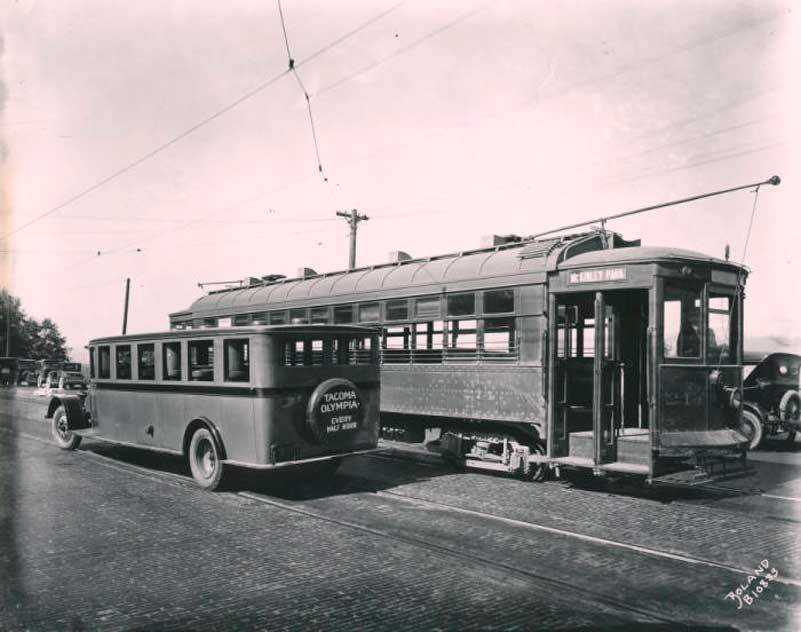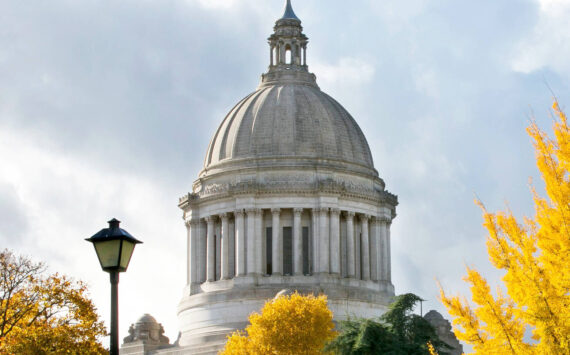By Morf Morford
Tacoma Daily Index
Every city struggles with the endless and ever more complicated challenge of getting its citizens in, out and around town.
Tacoma once had an intercity rail system that was the envy of the country.
And Tacoma, like every municipality, has a full range of ethical, budgetary and public service constraints and obligations to consider.
The two ends of this spectrum are the two questions of any and every political decision; what is accomplished? And who pays?
You’d think that these two questions that apply to every law and policy from building codes to speed limits would have straightforward and consistent answers.
They don’t.
What is accomplished by any law or policy?
One would hope that enhanced safety, security and opportunity for as many as possible would be the intent of almost every law from height requirements to pothole repair.
A widely distributed, near universally accessible mass transit system, as an example, accomplishes dozens of things every city needs or wants.
Traffic jams are the bane of urban living. These all-too-common experiences cost time, money and often lives.
“Road rage” encounters become ever more common.
A reduction of only a couple percent would make the driving experience (for those who find mass transit impractical) vastly more efficient, safer and far less stressful.
The other corollary curse of modern urban living is parking.
Parking in many cities is expensive – if you can find it. And it is expensive in more ways than one.
If you look at aerial photos of most American cities, an average of one fifth of downtown real estate is dedicated to parking.
Parking garages are absurdly expensive to build and maintain. And secure.
The irony is that the vast number of parking places are only occupied for a few hours in any given 24 hour day. And many cities have eight spaces set aside for each car.
How could this be?
Consider that most people drive to work and need one parking space for each car at work and at home; they also need a space at their shopping center, friends’ or families’ homes, their church or other such facility, the sports stadium or school football field, at their restaurants or coffee shops and cleaners, and at their recreation facilities such as parks, movie theaters, or other facilities.
Transportation, by any means, is expensive.
When we buy a car, for example, we pay for every aspect of that vehicle, and the maintenance and supply chain for every other vehicle on the road.
For example, if you are “buying” individual automotive transportation, you are not only consuming gasoline, (or other fuel) but also the energy to produce the steel and plastic and glass needed to make the car, along with the energy to produce the concrete and asphalt for the roads and parking spaces necessary for driving that car.
The average car costs the typical automobile owner about 10% of gross income each month.
If the average American family owns two cars, that’s about 20% of household income.
Factor in housing (at about 30% of household income) and that total is about half of the average household income – just for housing and transportation.
The cost of millions of automobiles to individuals, neighborhoods and certainly urban centers is prohibitive.
Who pays?
Who pays – and when – are the central questions of any functional society. On any issue.
From law enforcement to public education to zoning, every law and policy has costs, repercussions and unforeseen impacts – some immediate or individual, some eventual with widespread affects.
Should users pay? And should they pay each time they use it, or, as with a Discover Pass (for state parks) pay once with near unlimited use?
Or perhaps, like students in a public school, attend school with the assumption that they, thanks to their eduction, will be productive citizens and pay school related taxes when they become adults?
I see transit (whether highways or inter-city rail systems), like schools, as investments.
Their up-front costs are enormous – even horrifying.
But the costs, social and economic, of NOT having them is vastly more.
And when it comes to the near eternal question of “who pays?” the answer when we don’t invest in those things is frighteningly simple – we all pay.
When it comes to NOT investing in public transportation, our dividend is what we see in most cities; traffic jams, disputes over parking, vast, sterile and unproductive parking lots and something nearly impossible to measure; the throngs of shoppers and supporters of local business who would be glad to support downtown areas if parking and traffic did not seem specifically designed to keep them out.
In short, we are all paying for our transportation choices – most made not by us, but by generations long before us.
Could they have foreseen the transportation muddle we live with on a daily basis? Probably not.
Are we obligated to live under their assumptions about ideal or even preferred modes and models of transportation? No.
Olympia (and larger Thurston County) has experimented with a fare-less bus system for about a year and a half. (https://www.kuow.org/stories/just-get-on-and-go-no-bus-fare-needed-anymore-on-this-northwest-transit-system). It turns out that collecting fares was the biggest area of dispute, slowed down boarding and only contributed less than 2% of Intercity Transit’s operating budget.
As you might guess, ridership went up by 20% in the first month.
Olympia is the largest city in the Northwest to have such a system in place.
But it isn’t the first.
Corvallis Transit System (Oregon) was previously the largest transit agency in the Pacific Northwest to eliminate fare collection system wide when it made the change in 2011.
In its first year of fare-less operation, Corvallis bus system ridership increased nearly 38%, according to the city government.
Island Transit (Whidbey Island) has had a fare-free bus system since its founding in 1987 – largely paid for by a less than 1% local sales tax.
Fare-free transit is not a solution for everyone, but moving in that direction is.
Seattle Metro, for example spends $1.7 million on fare enforcement.
While the cost of fares is a hardship for many and a disincentive for many more, the bigger problem for most people—especially those with low income occupations—is the service itself.
Public transit doesn’t come frequently enough or get people where they need to go fast enough. Buses and trains are overcrowded and don’t run at all times of the day and night. So even if the transit agencies found a quarter billion dollars on the doorstep every year, eliminating fares might not be the highest and best use of those funds—especially since people would respond to this change by riding still more, further increasing the demand for service.
A good intermediary step might be corporate sponsorship of transit.
Maybe set hours or routes sponsored by companies or agencies.
Many employers already offer free or heavily discounted ORCA cards.
Busses and light rail systems are enormously expensive.
The more people that use them, the less the per person per mile costs will be.
No matter what systems we have, we will all be paying for it.
I’d far rather help subsidize bus riders than the continual government programs that support fossil fuel companies.






